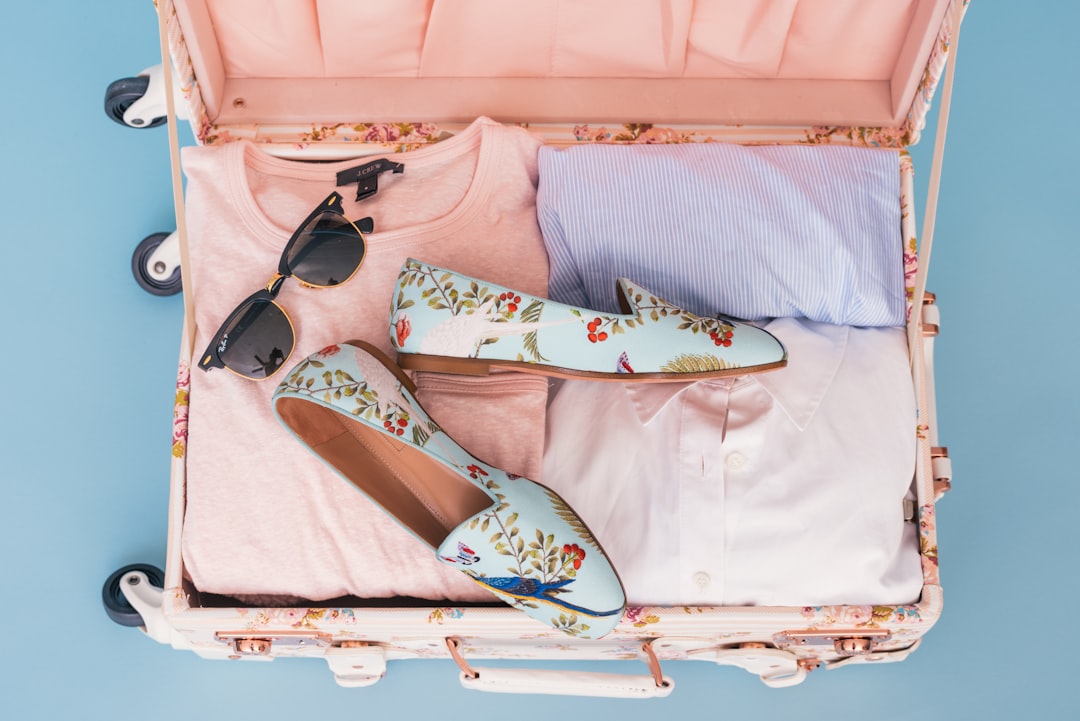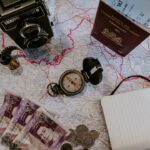best travel packing list: Top 10 Stress-Free
Why Having the Best Travel Packing List Matters
The best travel packing list can make the difference between a stress-free adventure and a travel nightmare filled with forgotten essentials and overpacked bags. As one seasoned traveler puts it: “Packing mishaps range from inconvenient (heading to the Caribbean without a swimsuit) to disastrous (finding you left the country without your wallet), but most are preventable.”
Quick Answer: Essential Travel Packing Categories
- Documents & Money – Passport, visa, travel insurance, cards, cash
- Clothing – 7-10 days worth, versatile layers, neutral colors
- Toiletries – TSA-compliant liquids, solid alternatives, hand sanitizer
- Electronics – Universal adapter, power bank, chargers, headphones
- Health & Safety – Medications, first-aid kit, copies of prescriptions
- Carry-On Essentials – Change of clothes, valuables, documents
Whether you’re planning a weekend getaway or a month-long international adventure, the key is packing smart, not heavy. Research shows that most travelers pack far more than they need – one expert recommends writing down everything you think you’ll need, then cutting it in half.
The biggest packing mistake? Overpacking. The solution? A strategic approach that focuses on versatile, essential items you can mix and match.
As Ramy Saber, founder of GoTravelHunt with experience in travel planning and logistics, I’ve helped countless travelers create the best travel packing list for their specific needs. Through years of managing complex projects and understanding traveler pain points, I’ve learned that smart packing is the foundation of any successful trip.
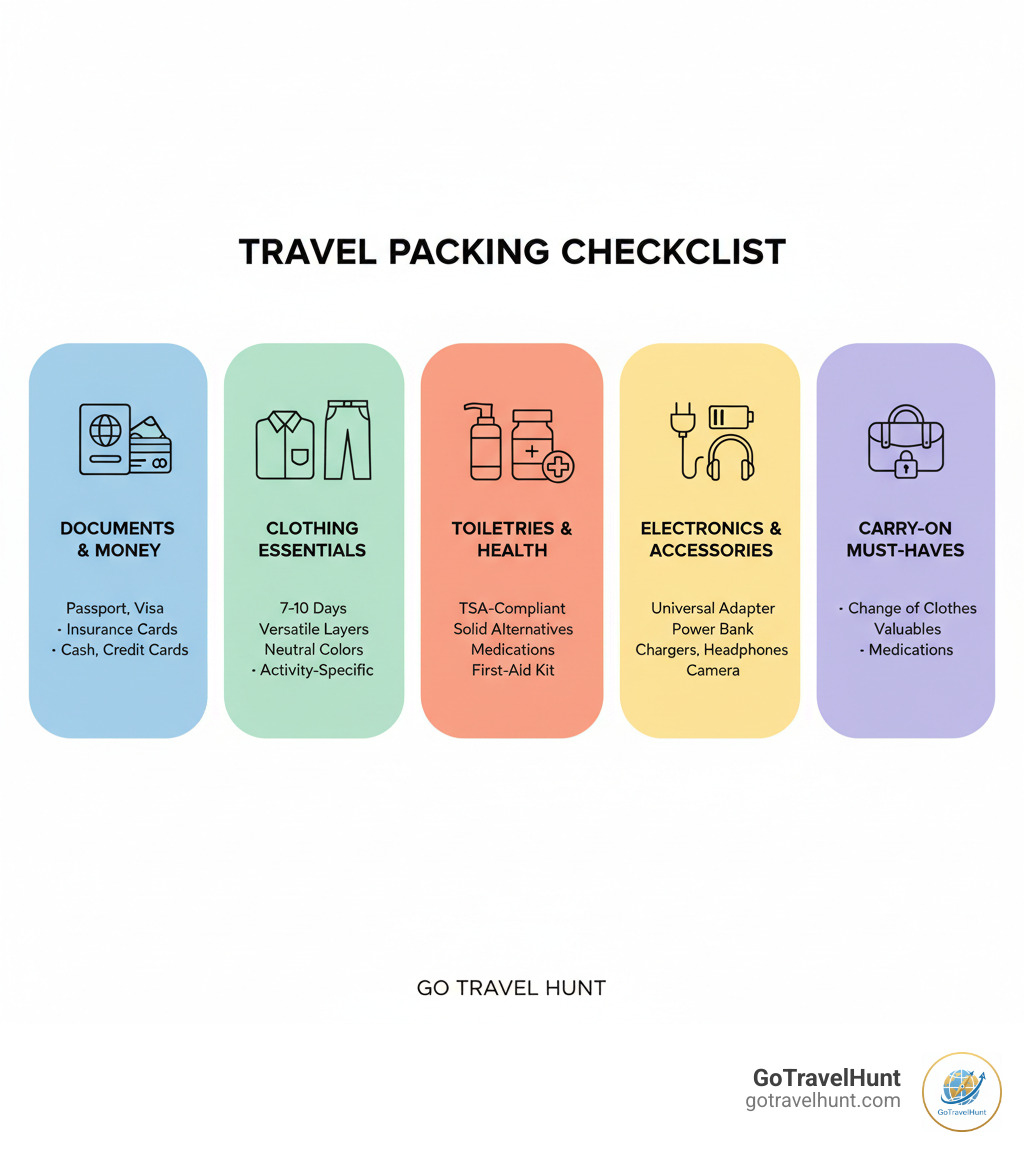
The Core Essentials: Your Non-Negotiable Items
Picture yourself standing at your front door, suitcase in hand, ready for that dream international trip. The difference between a smooth adventure and a travel disaster often comes down to what’s inside that bag. These core essentials form the backbone of your best travel packing list – the items that simply can’t be forgotten, no matter where your wanderlust takes you.
Think of these as your travel survival kit. Without them, you’ll find yourself scrambling to find a pharmacy in Tokyo at midnight or shivering in a café in Prague because you didn’t pack the right layers. Let’s break down these must-haves by category, so you can pack with confidence and focus on what really matters – making memories.
Clothing and Footwear for Any Climate
The secret to travel wardrobe success isn’t packing more – it’s packing smarter. Versatile layers and neutral colors become your best friends when you’re living out of a suitcase. Every piece should work double duty, mixing and matching to create different looks without taking up precious luggage space.
Here’s the golden rule: pack for 7-10 days maximum, then plan to do laundry if your trip runs longer. This approach dramatically reduces bulk while keeping you comfortable. As one seasoned traveler wisely noted, “There’s no need to bring a lot of stuff when you can just wash what you have.”
For shorter trips of three to five days, you’ll want one pair of underwear and socks per day, along with one to two dressier outfits, one to two casual outfits, and one to two pairs of shoes. Longer adventures over a week call for three dressier outfits, three to four casual outfits, two pairs of shoes, and two activewear outfits. Don’t forget to pack a travel laundry kit to keep everything fresh.
Climate considerations can make or break your comfort level. For hot destinations, lightweight, breathable fabrics like cotton and linen are lifesavers. Pack shorts, t-shirts, a swimsuit, and a cover-up, plus a crushable hat and sunscreen for sun protection.
Cold climates demand a layering strategy. Think thermal underwear as your base, sweaters for warmth, and a quality coat as your outer shell. Don’t forget gloves and a cozy scarf – your fingers and neck will thank you.
Multi-use items are pure genius for travelers. A versatile wrap or scarf can serve as an airplane blanket, beach cover-up, or neat evening accessory. Merino wool layers are particularly brilliant because they naturally regulate temperature and resist odors – perfect for those long travel days.
For activity-specific gear, match your footwear to your plans. Planning hiking adventures? Pack proper hiking boots. For city exploration, comfortable sneakers you can walk in all day are essential. We love these all-white sneakers because they go with everything and keep your outfit options flexible.
Toiletries and Personal Care
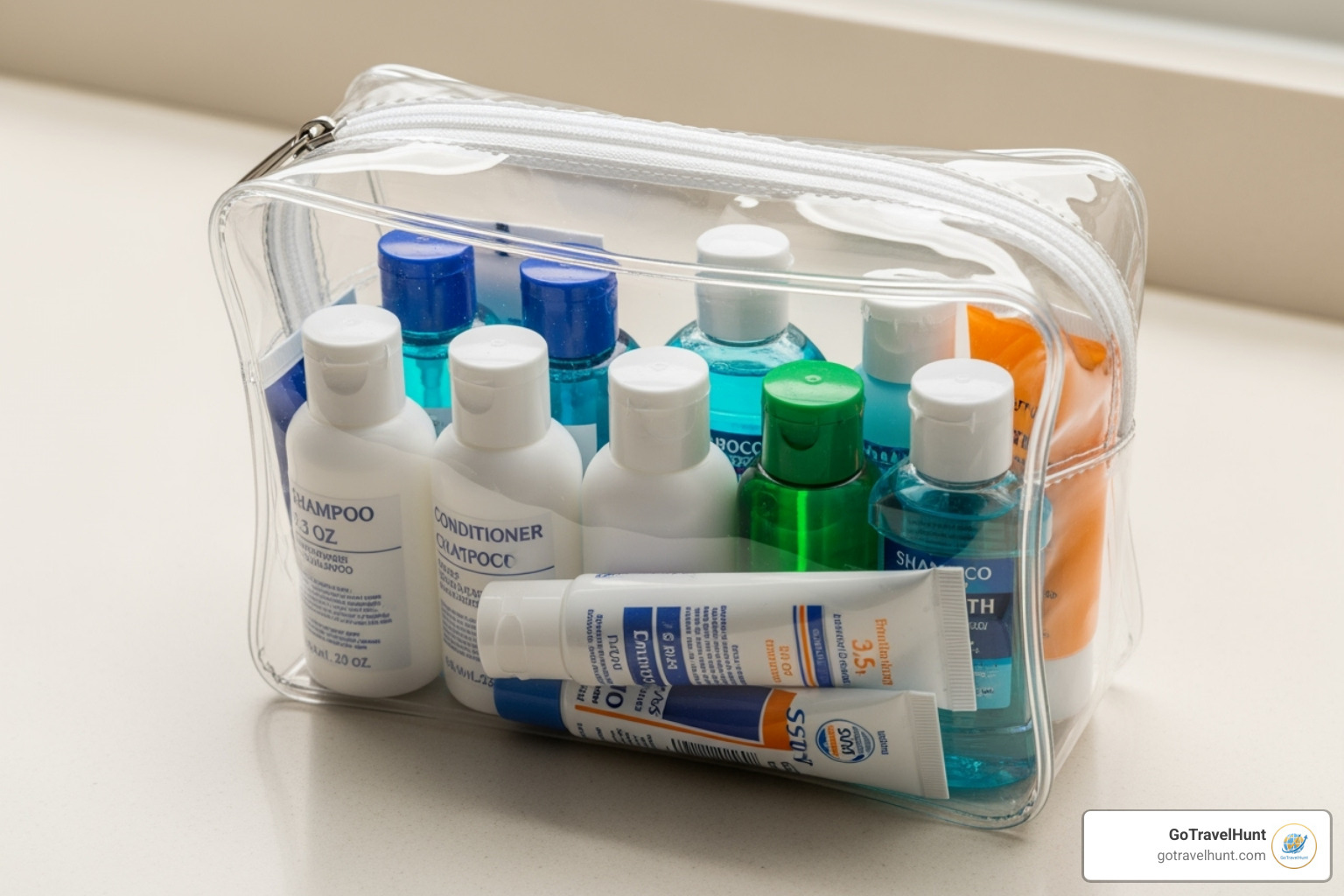
Toiletries can feel like a puzzle, especially when navigating airline restrictions. The key is understanding what you absolutely need from home versus what you can easily buy at your destination. Nobody wants to find their favorite face cream is banned from carry-on bags while standing in the security line.
The TSA 3-1-1 rule governs your carry-on toiletries: all liquids, gels, aerosols, creams, and pastes must be in containers of 3.4 oz (100 ml) or smaller, all fitting comfortably in one quart-sized clear plastic bag per passenger. If you can’t find travel sizes of your must-have products, TSA-friendly bottles let you decant your favorites into compliant containers.
For checked luggage, you have much more flexibility with sizes, so pack your larger bottles there while keeping essentials in your carry-on. This strategy gives you the best of both worlds – compliance with regulations and access to your necessities.
Your essential toiletries should cover all the basics: a toothbrush, toothpaste, and dental floss for oral care. For body care, pack soap or body wash, shampoo, conditioner, and deodorant.
Your hair and skincare routine shouldn’t take a vacation. Pack a hair brush and any necessary styling tools. For international travel, check that your tools are dual voltage or bring travel-friendly options like this flat iron or this travel hair dryer. Don’t forget facial cleanser and face lotion to keep your skin happy in different climates.
Personal care essentials round out your kit: sunscreen for protection, contact lenses with solution plus spare glasses, shaving supplies, makeup and remover, menstrual products, and basic grooming tools like a nail file, nail clippers, and tweezers.
Health and safety items have become non-negotiable in today’s travel landscape. Hand sanitizer and sanitizing wipes are absolute carry-on musts. A quick wipe-down of your airplane tray table, seat armrests, and hotel TV remote can save you from picking up unwanted travel bugs. While mask requirements have relaxed in many places, it’s still wise to pack a few since some venues or transportation may still require them.
Essential Electronics and Accessories
In our connected world, the right electronics can make or break your travel experience. But international travel adds complexity with different power outlets, voltage requirements, and the challenge of keeping everything charged and organized.
A universal travel adapter is your first line of defense against the outlet puzzle. Most countries outside the US use different plugs and voltage systems, making a universal travel adapter an absolute game-changer. This single device works across multiple destinations and saves you from buying separate adapters for each country. Always check if your devices are dual voltage (look for ‘100-240v’ on the label) – if not, you’ll need a converter too.
Your power bank becomes your best friend during long sightseeing days. A fully charged portable backup battery ensures your phone, camera, or tablet never dies when you need it most. There’s nothing worse than missing that perfect sunset photo because your phone died.
Don’t forget the basics: phone and laptop chargers with their power cables and wall adapters. We recommend keeping all electronic items organized in a single zipper pouch – it makes airport security easier and prevents the dreaded cable tangle.
Headphones are essential for entertainment and sanity. Whether you prefer noise-canceling headphones for peaceful flights or simple earbuds for watching movies, pack them. Pro tip: bring a corded pair that works with airplane seat entertainment systems – many planes still use older headphone jacks.
For camera enthusiasts, remember extra batteries, chargers, and memory cards. Nothing’s more frustrating than running out of storage space during that once-in-a-lifetime moment.
Keeping electronics safe requires some planning. Transport laptops and tablets in padded sleeves or dedicated compartments. For smaller items and cables, that same zipper pouch prevents damage and keeps everything organized for easy access.
Documents, Money, and Security
These items literally make international travel possible. Lose your passport, and your dream vacation quickly becomes a consular nightmare. Proper organization and security measures for these essentials can save your entire trip.
Your passport is your golden ticket to international adventure. Ensure it’s valid for at least six months beyond your return date – many countries require this buffer. Some destinations also need special visas, so check your destination’s requirements well before departure.
Digital and physical copies provide crucial backup protection. Make photocopies of your passport, visa, and driver’s license, storing them separately from the originals. We also recommend scanning these documents and saving them in a cloud service or password-protected phone folder – digital access can be a lifesaver if originals are lost or stolen.
Travel insurance information deserves a spot in your document kit. Keep policy details and emergency contact numbers easily accessible. Travel insurance protects against illness, injury, theft, and cancellations – it’s peace of mind that pays for itself when you need it most.
Your financial toolkit should include at least two different credit cards and one debit card. Notify your banks and credit card companies about your travel dates to prevent fraud alerts from blocking your access to funds. When paying abroad, always choose to pay in local currency to avoid inflated exchange rates from dynamic currency conversion.
Local currency smooths your arrival experience. Pack a small amount of your destination’s cash for immediate expenses like taxis or tips. Download a currency exchange app like the free Xe app to track exchange rates and manage spending.
Security measures protect your valuable documents and money. A money belt, neck wallet, or hidden pocket keeps your passport, extra cash, and backup cards secure under your clothes, away from pickpockets. For daily use, choose a crossbody bag with a zipper – it’s much safer than an open tote or back pocket.
Keep an emergency contact list that includes local and home contacts, plus phone numbers for your bank, credit card companies, and insurance providers. When trouble strikes, having these numbers readily available can turn a crisis into a minor inconvenience.
Smart Packing Strategies and Hacks
Learning to pack efficiently is truly an art form that can transform your entire travel experience. The right strategies will help you maximize every inch of space, dodge those annoying baggage fees, and most importantly, reduce the stress that comes with dragging heavy luggage around the world.
Carry-On vs. Checked Luggage: What Goes Where?
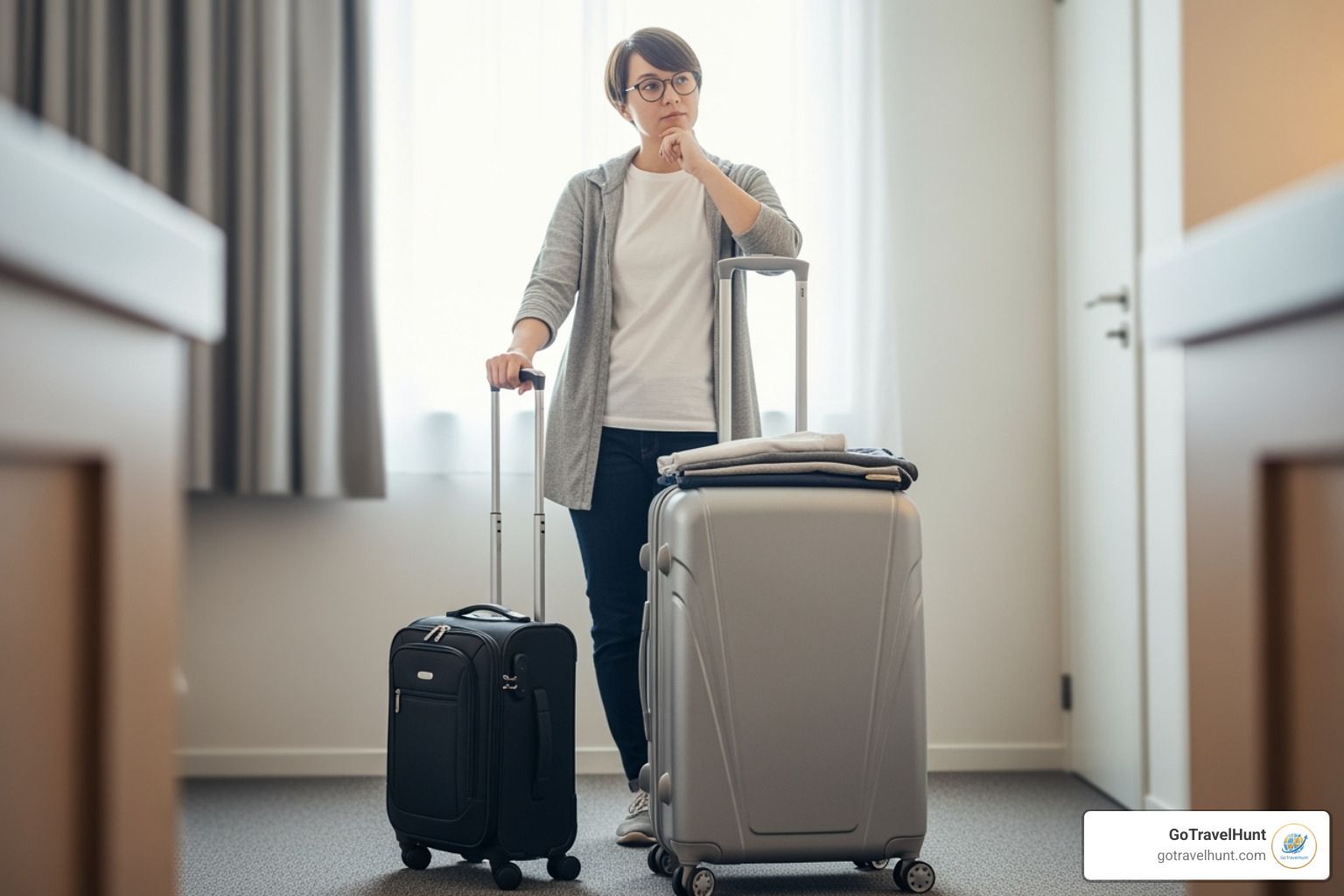
When it comes to creating your best travel packing list, one of the biggest decisions you’ll face is what goes into your carry-on versus what gets checked. Here’s the truth: if you can possibly manage with just a carry-on, you absolutely should. As one seasoned traveler puts it, “Packing light is a cliché, yet one that has a lot of truth to it. The more I travel, the more I realize I don’t need a lot of stuff.”
The beauty of carry-on only travel goes far beyond just saving on baggage fees. You’ll never have to worry about lost luggage ruining your first day at the beach or an important business meeting. Plus, you can breeze past baggage claim and head straight to your adventure. When you’re navigating crowded trains or making spontaneous itinerary changes, that lightweight bag becomes your best friend.
Some items should never, ever be checked. Your valuables like jewelry, watches, or family heirlooms belong in your carry-on where you can keep an eye on them. All medications – both prescription and essential over-the-counter drugs – must stay with you. Imagine being stuck without your daily medication because your bag decided to take a detour to another continent!
Your important documents including passport, visas, ID, wallet, and credit cards are obvious carry-on essentials. Electronics like laptops, tablets, cameras, and portable chargers also need your personal protection from the rough handling that checked bags often endure.
Here’s a pro tip that has saved countless travelers from wardrobe disasters: always pack at least one complete outfit change in your carry-on. That means fresh underwear, socks, and a shirt tucked safely in your personal bag, just in case your checked luggage decides to take an unscheduled vacation.
For checked luggage, you have much more freedom with liquids. Those full-sized shampoos and lotions that exceed the TSA 3-1-1 rule can travel comfortably in your checked bag. Just remember to seal all squeeze bottles in plastic bags – airplane pressure changes can turn your suitcase into a sudsy mess if you’re not careful.
| Category | Carry-On Essentials | Checked Bag Items |
|---|---|---|
| Documents & Money | Passport, visa, ID, wallet, travel insurance | Photocopies of documents |
| Electronics | Phone, laptop, chargers, camera, power bank | Hair dryer, large electronics |
| Medications | All prescriptions, essential OTC drugs | Extra supplies, non-essential items |
| Clothing | 1-2 outfit changes, underwear | Bulk of wardrobe, heavy items |
| Toiletries | TSA-compliant liquids, essentials | Full-size bottles, extra supplies |
| Valuables | Jewelry, important items | Nothing valuable! |
The Best Travel Packing List Hacks
Once you’ve mastered the carry-on versus checked bag strategy, it’s time to dive into the game-changing hacks that will revolutionize how you pack. These aren’t just clever tricks – they’re battle-tested methods that frequent travelers swear by.
Packing cubes are absolutely worth the investment. Think of them as drawers for your suitcase, keeping everything organized and compressed. You can dedicate one cube to underwear and socks, another to shirts, and a third to pants. When you arrive at your destination, you’re not digging through a chaotic mess – everything has its place.
The great rolling versus folding debate has a clear winner for most items: rolling wins hands down. Rolled clothes take up significantly less space and wrinkle less than folded ones. However, bulkier items like jeans or sweaters often pack better when folded flat at the bottom of your suitcase.
Your shoes are prime real estate for small items. Stuff socks, underwear, chargers, or toiletries inside your shoes – just make sure everything is in bags to keep things clean. This hack alone can free up surprising amounts of space in your main compartment.
Compression bags work like magic for bulky items like winter coats or sweaters. You pack the items inside, seal the bag, and roll out the air. Suddenly, that puffy jacket takes up half the space it normally would.
Here’s a clever strategy for flight day: wear your heaviest and bulkiest items on the plane. That thick sweater, heavy boots, or winter coat doesn’t count against your luggage weight when you’re wearing it. You can always remove layers once you’re settled in your seat.
Pack an empty, foldable bag for souvenirs and shopping finds. A lightweight duffel or tote bag takes up almost no space when empty but gives you options when you inevitably find things you want to bring home.
Choosing the Right Luggage and Bags
The foundation of any great packing strategy starts with choosing the right luggage for your specific travel style. This decision will impact every other aspect of your packing experience, so it’s worth getting right.
Durability should be your top priority, especially for international travel. Your luggage will face baggage handlers, overhead bins, cobblestone streets, and who knows what else. Look for reinforced corners, quality zippers, and sturdy handles that won’t give up on you halfway around the world.
Size and weight restrictions vary significantly between airlines and regions. European budget carriers are notoriously strict, while some international flights are more generous. Check your airline’s specific requirements before you travel – there’s nothing worse than paying hefty fees at the airport for an overweight or oversized bag.
The wheels versus backpack decision often comes down to your destination and travel style. Four-wheel spinner suitcases glide effortlessly through airports and hotel lobbies, making them perfect for urban destinations with smooth surfaces. However, if you’re planning to explore cobblestone streets, hiking trails, or places with lots of stairs, a quality travel backpack might be your better companion.
Hard-shell versus soft-shell suitcases each have their advantages. Hard-shell cases offer superior protection for fragile items and are often more water-resistant. Soft-shell bags typically offer more packing flexibility and external pockets for easy access to frequently needed items.
Don’t forget about your day-to-day bags. A comfortable daypack is essential for exploring cities, visiting museums, or day trips from your base. Look for one with padded straps and multiple compartments to organize your daily essentials.
For urban destinations where pickpocketing can be a concern, a crossbody bag with a secure zipper offers both convenience and security. You can keep it in front of your body in crowded areas while still having easy access to your phone, wallet, and other essentials.
The best luggage is the kind that makes your journey easier, not harder. Choose pieces that fit your travel style, and don’t be afraid to invest in quality – good luggage pays for itself over many trips.

